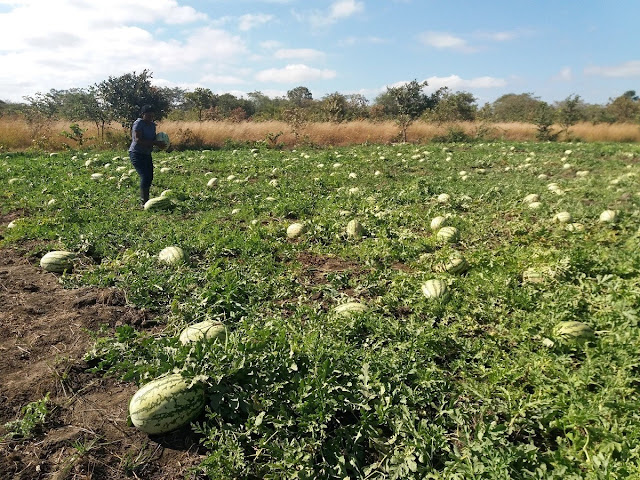Before choosing an irrigation method one
has to check on the water source, capital involved and location.
There is always a myth that
drip irrigation is the best when it comes to yields. Drip is only the best
since it reduces labour and utilizes water.
Why
is water essential for watermelon?
A fully ripe watermelon is 90
per cent water. Therefore, proper irrigation has a major impact on yields and on the final quality
of the fruit. Thus, water shortages cause the production of fruit with low
quality and little tradeability.
Different irrigation methods
for watermelon:
- Masterpits method
- Sprinkler method
- Furrow method
- Drip method
- Ridges method
- Normal/ Economical method
1.
Masterpits method
It is the best method to use
in drier areas as it retains water for the longest time compared to any other
method. In this method, you plant four plants in one pit, which proves to be
the best when maintaining the plants in terms of water and nutrients.
2.
Sprinkler method
This is the most wonderful and
best method of all but not yet tasted in Zambia due to myths and theories that
it spreads diseases. Sprinkler is made rain, which ensures that plants gets
water and same time cool.
This method proves to be the
best in places with High temperatures where evaporation is very high. It is the
best when it comes to plants cooling and yields increasing but needs a lot of
water and capital.
3.
Furrow method
This is the best method to use
when you have plenty of water; it is very economical and easy to work with. It
is the cheapest method of all, as water will flow freely in the furrows to
other plants.
4.
Drip method
This is the cheapest to use of
all; water flows freely on the drippers to every plant. It is the easiest
irrigation method of all but the most expensive to install.
5.
Ridges method
These are raised beds and
plants are planted on top unlike on furrows.
It is the best method to use
in water logged areas or places with high rainfall.
6.
Normal/ Economical method
This method involves planting in
the same manner as maize, nothing much to be done on ground. This is mostly
used in rain fed areas. It is very tedious when it comes to weeding.
Note: We cannot
be relying on rain while we have to feed the nation whether it rains or not. Let
us irrigate and be ready this festive season and beginning of the year so we
sell to individuals, retailers and primary schools.
The smart farmers are already on it, let us not waste time, the demand might be high as always looking at our conditions and rain patterns lately.

Comments
Post a Comment